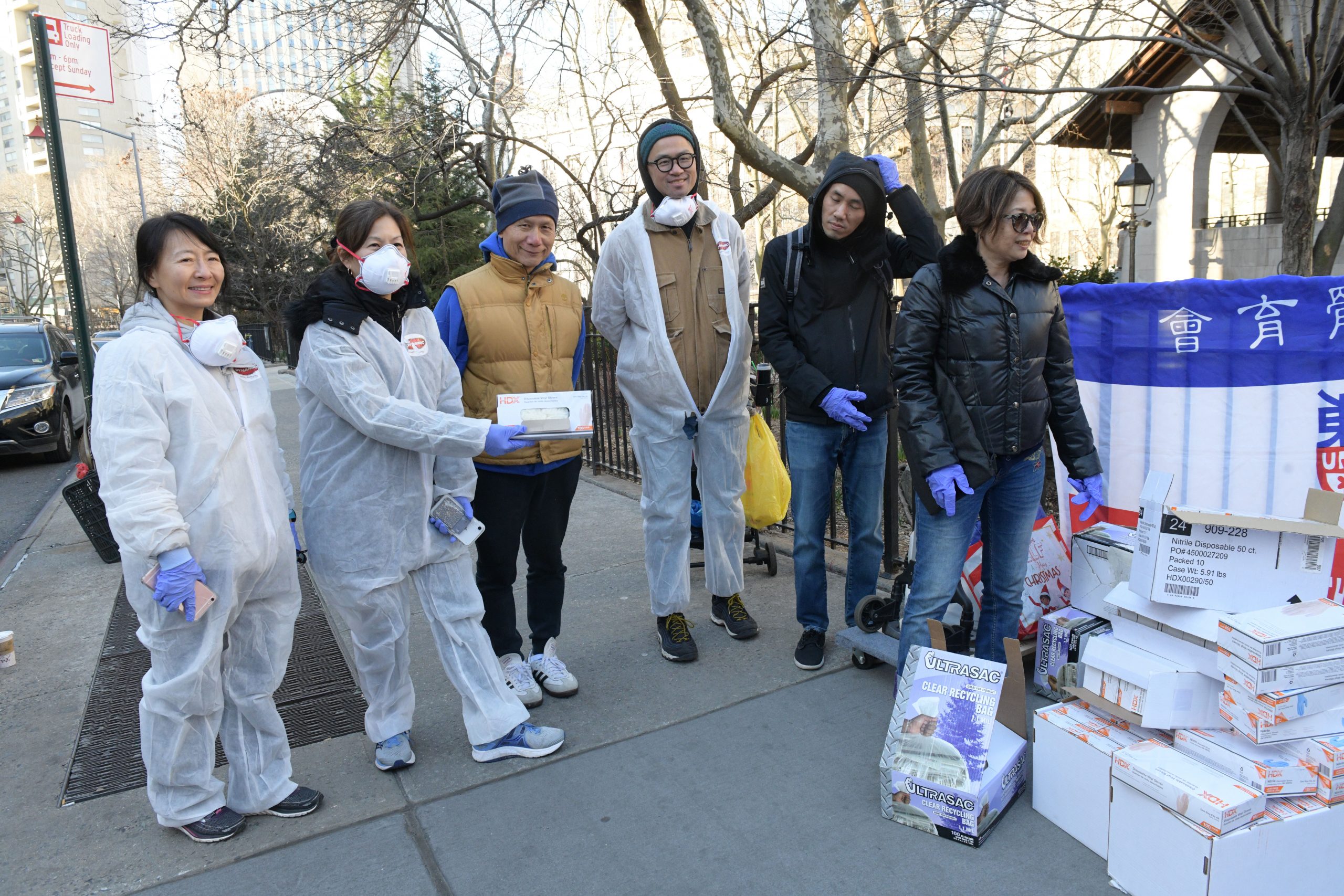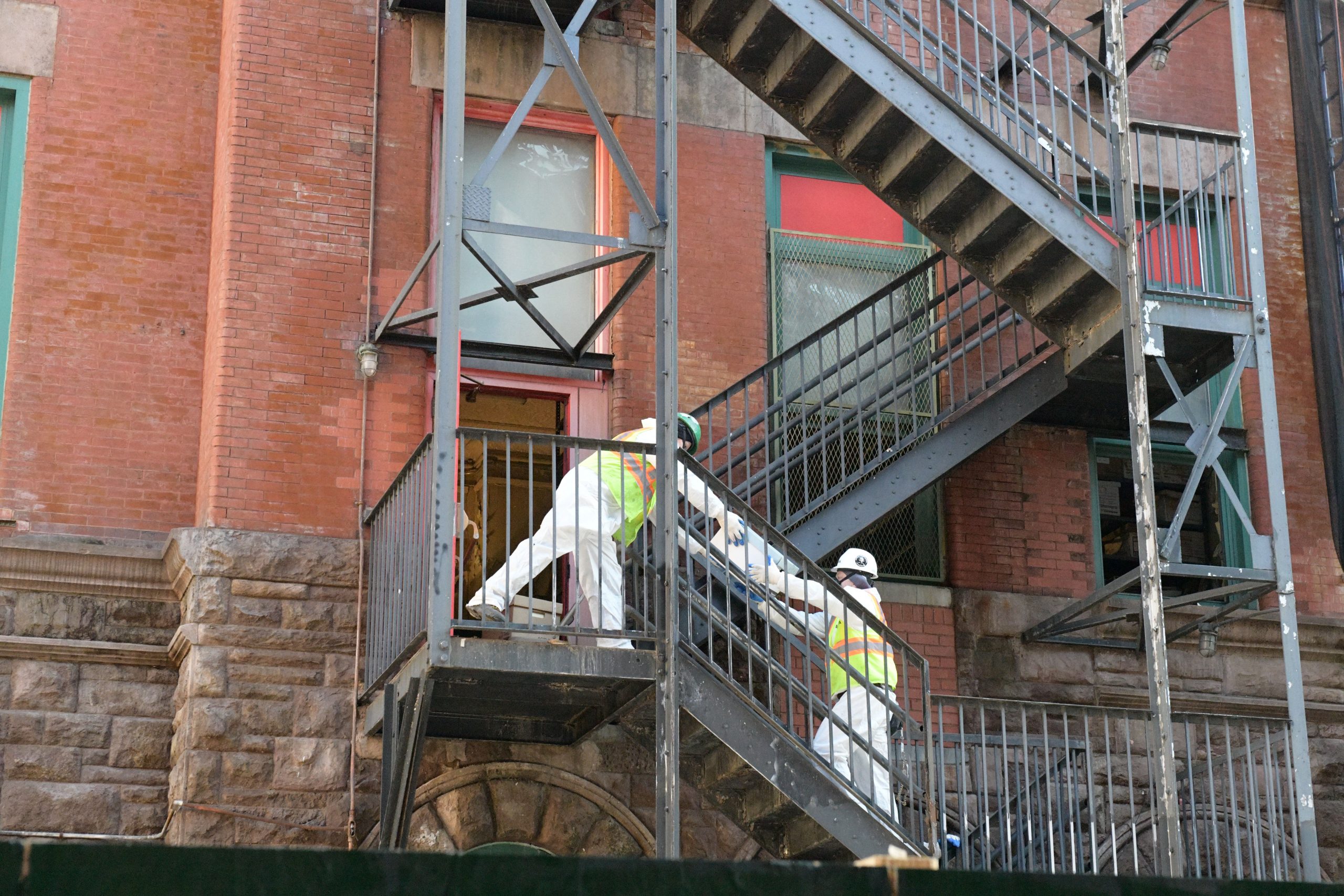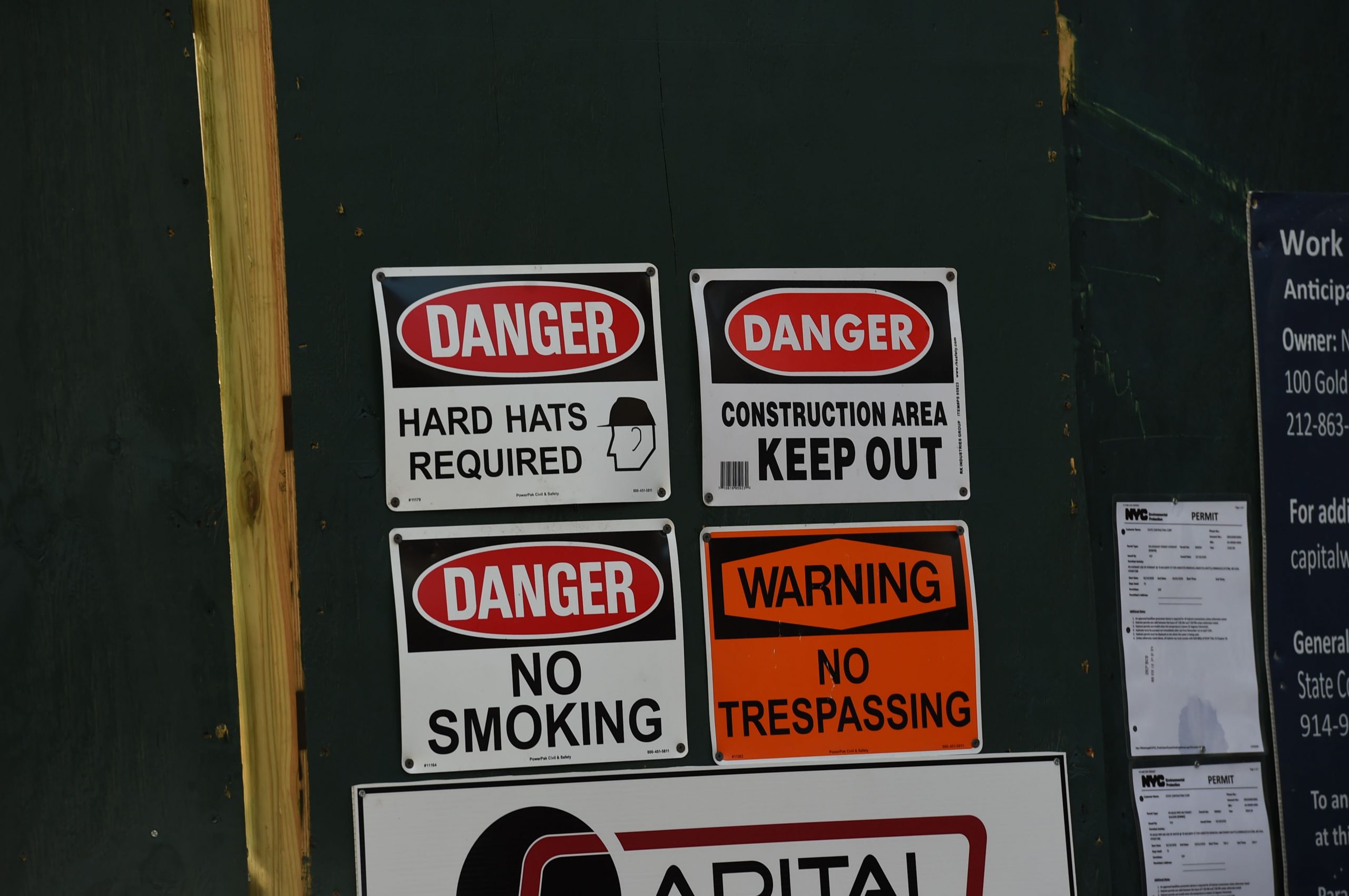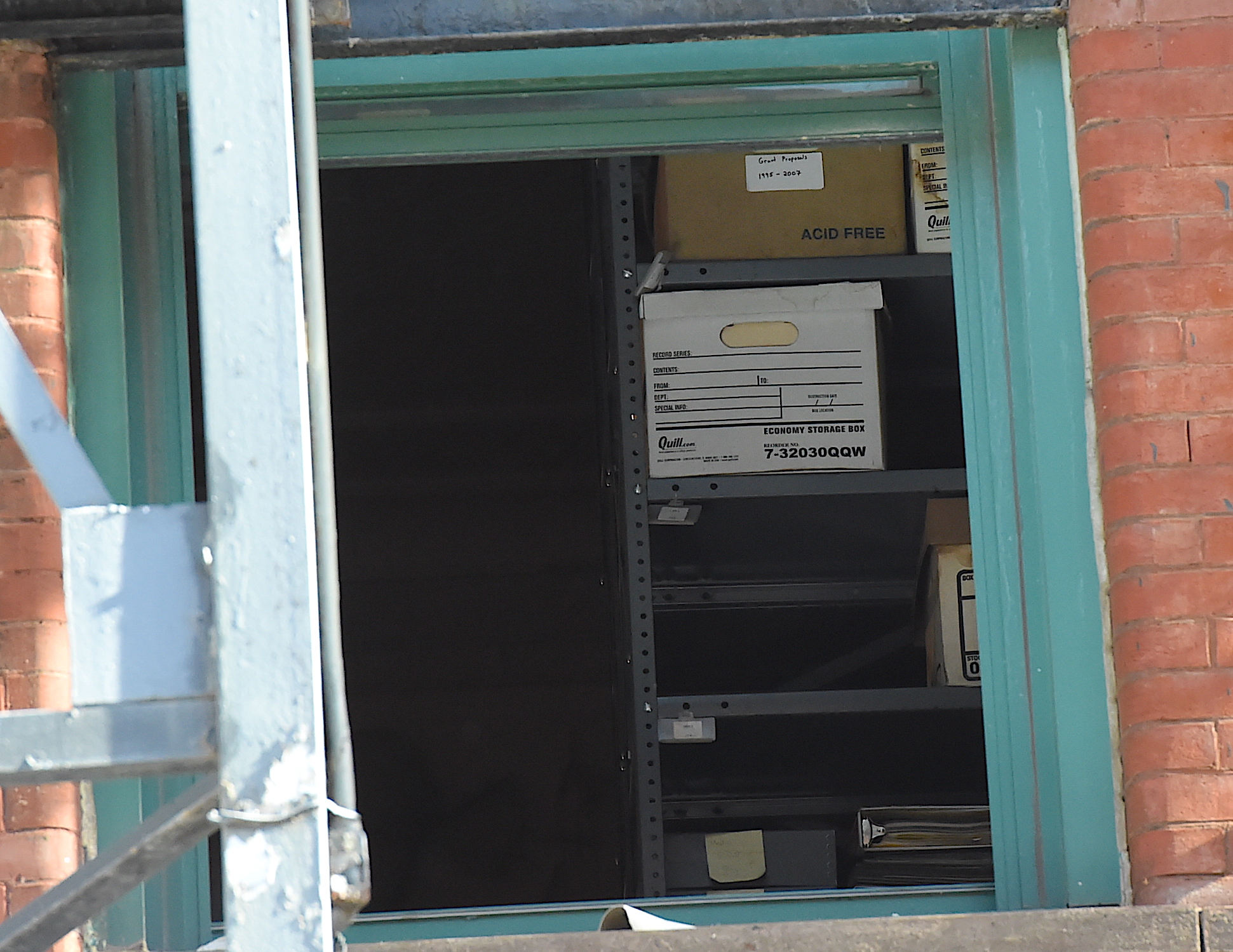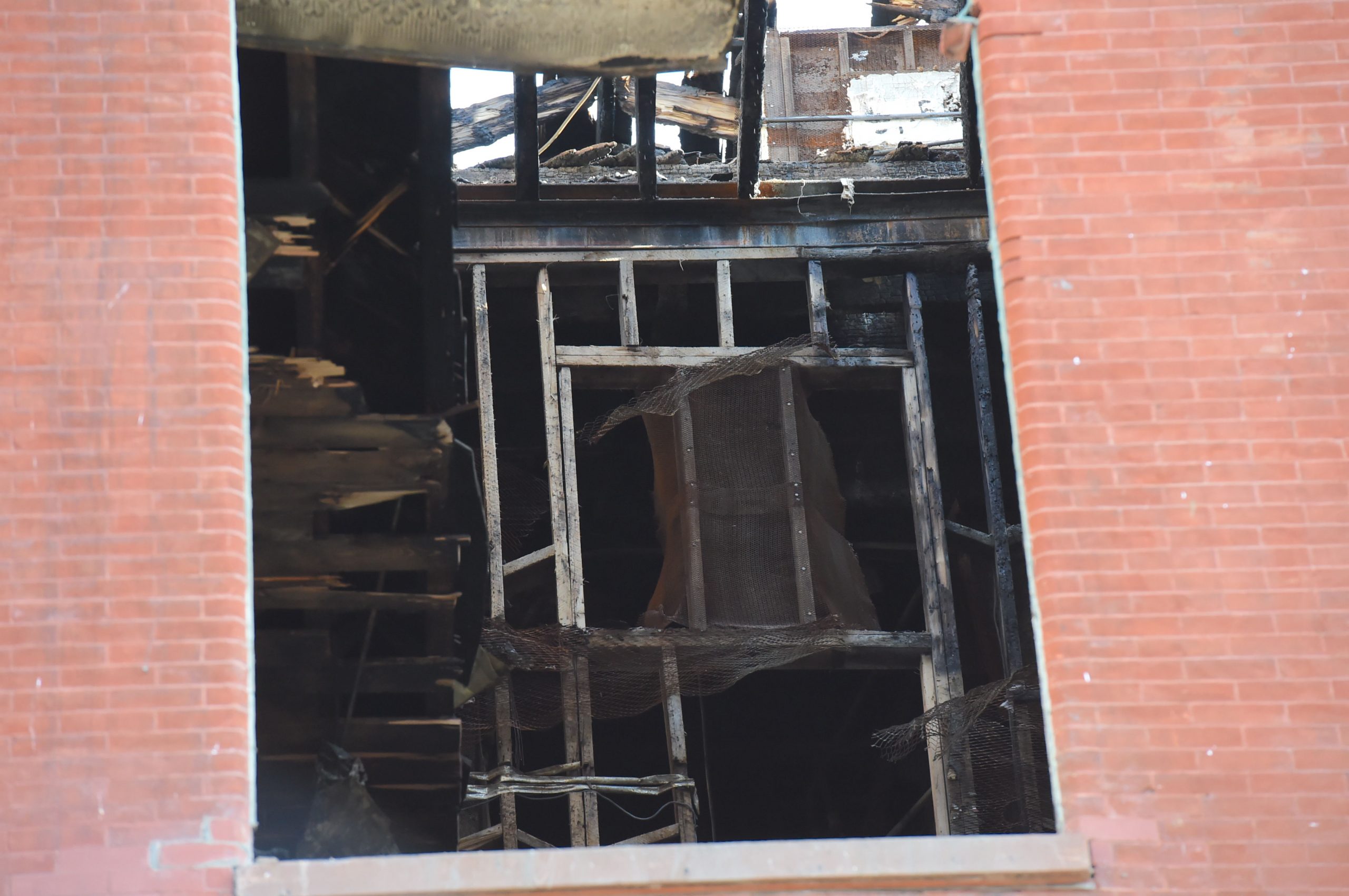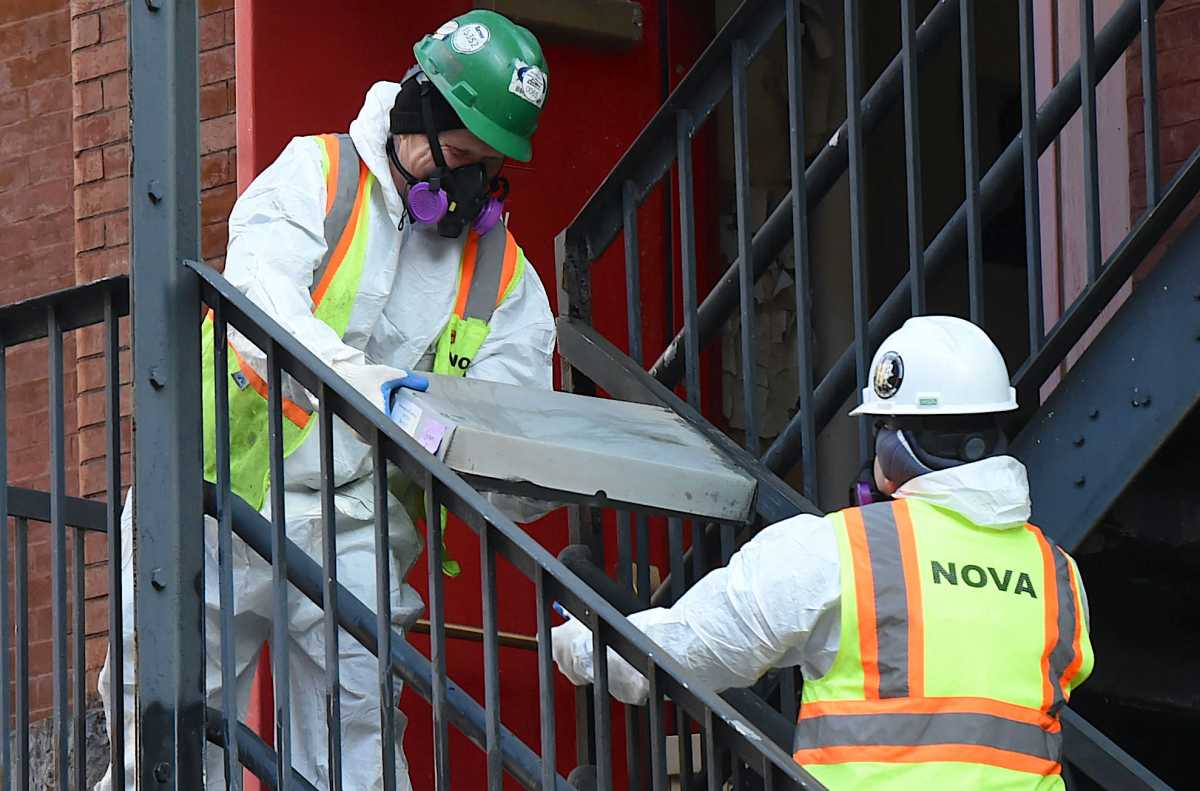Construction crews clad in white Tyvek suits and respirators formed an assembly line Sunday from the second floor of 70 Mulberry St. and moved 2,000 boxes down from the fire-damaged Chinatown building to a waiting truck.
This was the beginning of the end on Sunday of the long wait by the Museum of Chinese in America to recover 85,000 documents and artifacts from the Chinatown building destroyed in a 5-alarm fire in January.
Officials from the museum were on site at 6 a.m. March 8, accompanied by workers and truckers from Total Environmental Restoration Solutions who will take the 2,000 boxes 18 miles to a facility in Westchester County.
There, documents damaged by water from the fire or from rainwater that entered the building through the damaged roof will be frozen and the water removed to preserve each article. It’s a slow and meticulous process, but necessary — according to museum officials — to preserve documents that would otherwise suffer damage from water and mold.
The building at 70 Mulberry St., which is controlled by the city’s Department of Citywide Services, was the home for the museum’s archives and a myriad of other organizations that are now without a home. Some of those organizations representatives joined members of the museum watching the movement of the boxes from the second floor down a fire escape.
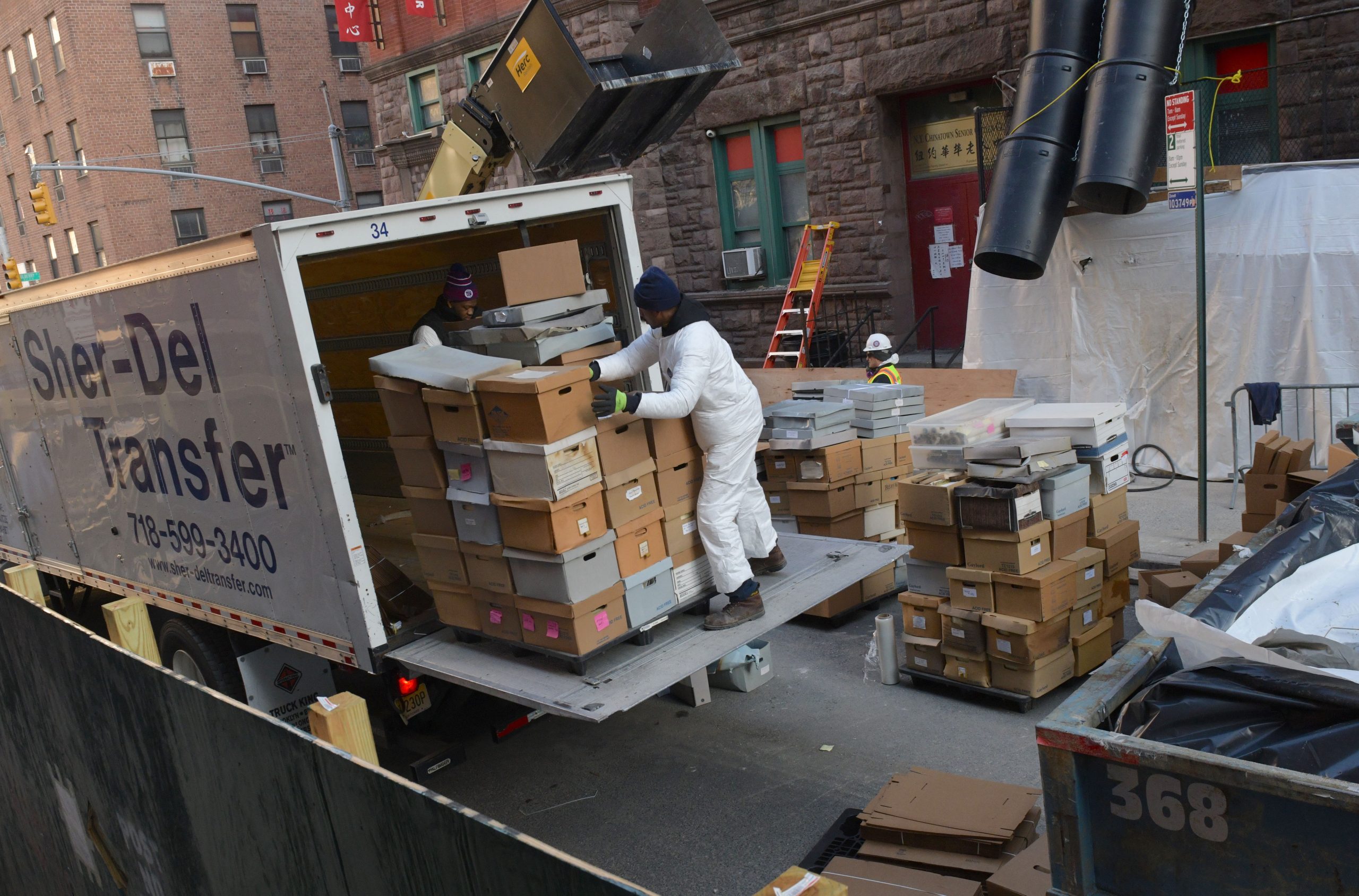
Only two weeks earlier, the museum received a green light only a day before members of the Chinese community planned a mass demonstration in front of the building to get the city to allow the removal of the archives.
The city had maintained that the building was unsafe for museum officials to enter – the city hiring contractors to clear out debris from burnt out third and fourth floors, where the roof was partially missing. Workers were able to clear some of the heavier debris to take pressure off lower floors and prevent ceiling collapses into the museum storage areas on the second floor.
In addition, the building is believed to have asbestos in the walls, so workers are suited to protect them from exposure.
Nancy Yao Maasbach, president of the museum, stood outside the wall-off site, wearing her own Tyvek suit and mask in preparation to view the contents of some of the boxes when the trucks pull out of the construction site. She and several other members of the museum prepared to review the boxes and examine some of the more damaged artifacts.
“We wanted to check out what was coming out and get a sense of things,” Maasbach said, complaining that she and her colleagues couldn’t even find a cup of coffee at that hour. “One of the guys working there took bunch of photos, ran out and said, ‘here we started!’ That was nice of them – everyone involved knows how important the collection is.”
Upon inspection, she said they believe 30 percent of the collection is wet, another 20 percent is a little wet and the rest is “dryish.” The entire collection was re-boxed on site by workers and packed on pallets that hold 20 boxes each, going into a truck that holds eight pallets. She expected to fill up four trucks before they are complete.
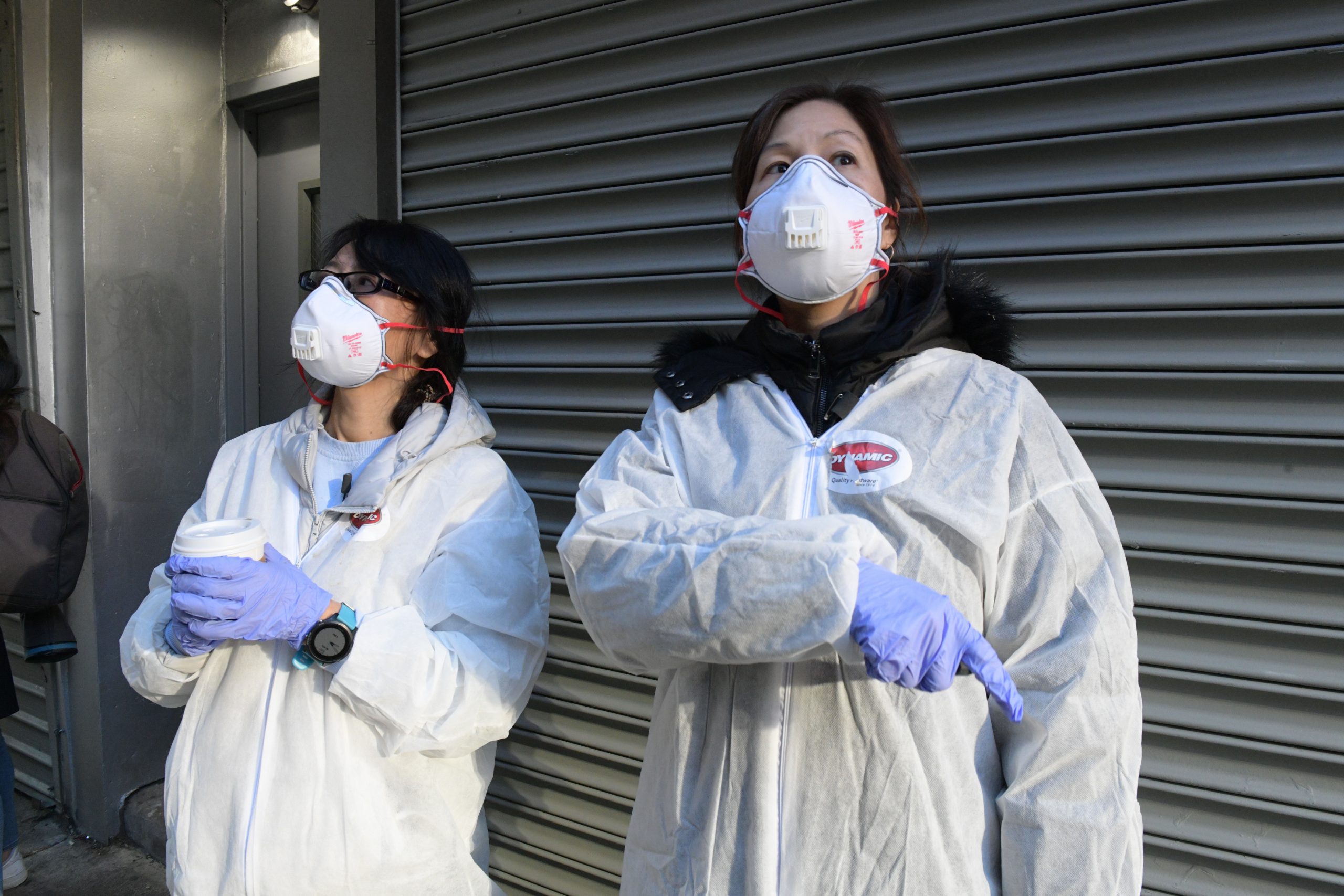
Maasbach said it was a long process to get to this point, as they worried that the wet documents would eventually get mold from the warming weather. She said the city used private contractors to remove debris from upper floors to make it safer for the movers to remove the archives.
“The city hired a bunch of people private contractors, we hired restoration movers, a different skill set, but we just want to get this done as fast as possible,” she said as she watched from the top of a step across from the site. “Time is of the essence and we didn’t want to waste time on triage. The faster we move trucks the better. We get them to the freezer where its stabilized. We will go to site tomorrow to take a look at the company warehouse.”
She said they were hoping to finish the move Sunday, but the work is arduous and time consuming.
“We hope to finish today, that’s what we hope, but we are here, and its so cold,” she sighed.
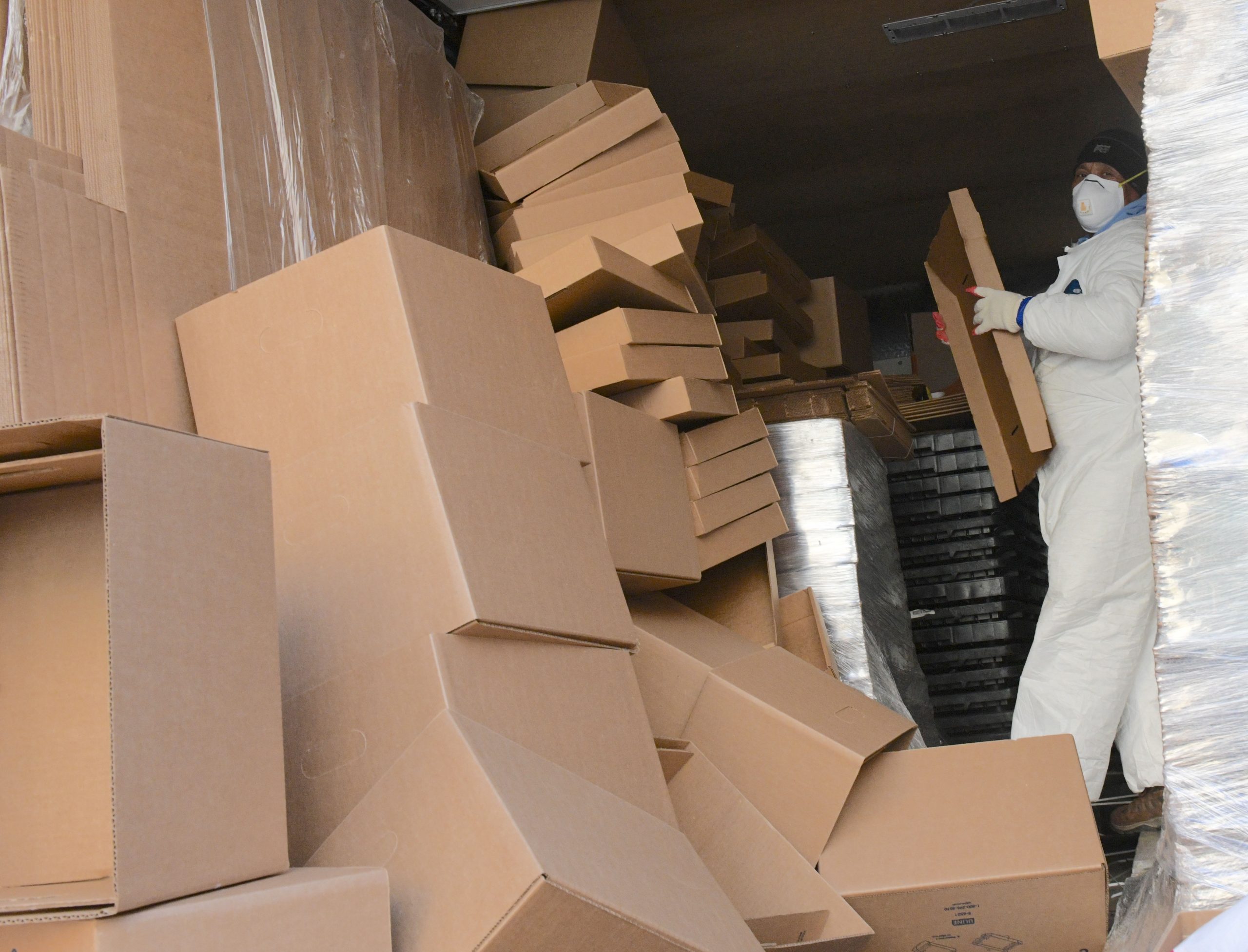
Meanwhile, the other four organizations in the building are hoping to recover some of their belongings. Echo Wong, treasurer and board member of the United East Athletic Association said they are hoping to recover some of their equipment, including a robotic exercise machine.
When asked where they are operating now, she said, “we are nowhere.” She added her all volunteer organization has been meeting in restaurants and phone conferencing, but its not the same as having a home.
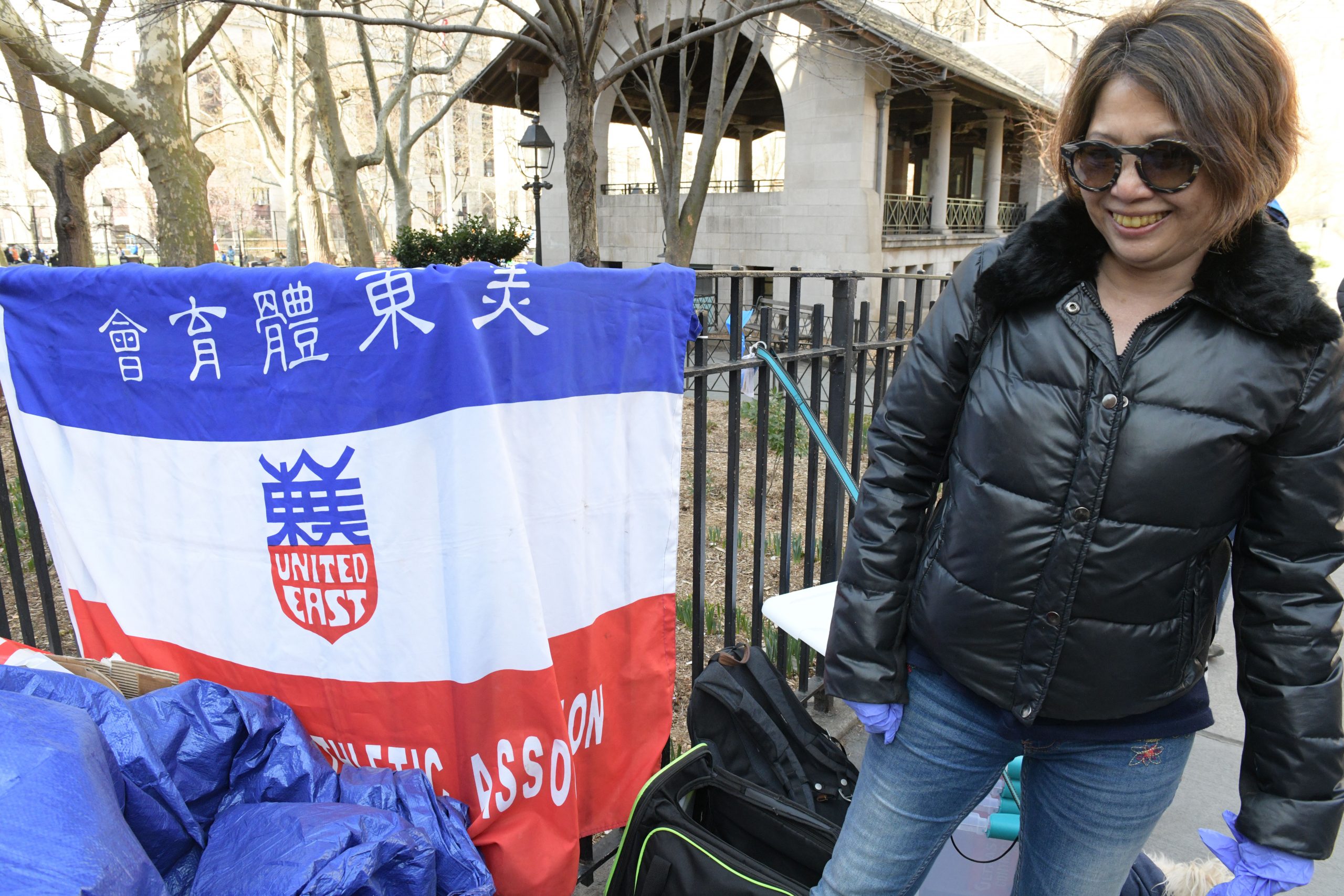
“We’ve been waiting for weeks, every time they say we should come, they cancel,” Wong said as she watched workers haul boxes from the building. “Even now, we are not sure how much stuff they can grab – so we wait for city updates. At least something is happening. We are all volunteers and get no government funding, yet we survive – all 15 programs year round.”
The city has said they expect to complete the demolition over the coming months and the goal is to rebuild the building to return all of the programs to the community.
